
IN ANCIENT MESOPOTAMIA, irrigation was the key to civilization. Rivers such as the Tigris and Euphrates carried a plentiful flow of water, fed by snowmelt from the mountains of Anatolia to the north. However, unlike the Nile in Egypt, which flooded on a regular annual schedule that perfectly accommodated the growing seasons, Mesopotamian rivers did so unpredictably and violently. To protect against the havoc caused by untamed flooding and to provide a steady supply of water to cultivate the land, Mesopotamian kings saw the construction of irrigation systems as among their chief responsibilities.
The pride rulers took in these engineering feats is made clear by a number of celebratory rock reliefs that have been discovered near irrigation projects dating to the Neo-Assyrian Empire (883–609 b.c.). At the site of Khinis, for example, where the Gomel River emerges from a narrow gorge at the foot of the Zagros Mountains, the king Sennacherib (r. 704–681 b.c.) built a dam that diverted its waters into a canal that fed into a series of waterways snaking some 60 miles in all across the plains to the walls of his new capital at Nineveh. This canal was the crown jewel in an extensive regional irrigation network the king built. To commemorate his exploits, Sennacherib commissioned monumental reliefs, along with a lengthy cuneiform inscription, carved into a cliff rising above the canal head at Khinis. In the inscription, he claims that when he founded his new capital, its unwatered fields were “woven over with spider webs” and its people “did not know artificial irrigation, but had their eyes turned for rain (and) showers from the sky.” Thanks to his new canal network, Sennacherib writes, opulent gardens bloomed at Nineveh, and the countryside grew abundant with crops.
この記事は Archaeology の May/June 2020 版に掲載されています。
7 日間の Magzter GOLD 無料トライアルを開始して、何千もの厳選されたプレミアム ストーリー、9,000 以上の雑誌や新聞にアクセスしてください。
すでに購読者です ? サインイン
この記事は Archaeology の May/June 2020 版に掲載されています。
7 日間の Magzter GOLD 無料トライアルを開始して、何千もの厳選されたプレミアム ストーリー、9,000 以上の雑誌や新聞にアクセスしてください。
すでに購読者です? サインイン

ORIGINS OF PERUVIAN RELIGION
While investigating looters' holes at the site of La Otra Banda in northern Peru's Zaña Valley, archaeologist Luis A. Muro Ynoñán of the Field Museum and the Pontifical Catholic University of Peru spotted carved blocks around seven feet below the surface.

ISLAND OF FREEDOM
Many of the enslaved Africans sent to Brazil beginning in 1549 were from what is now Angola, where one of the most widely spoken languages was Kimbundu.
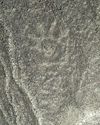
NAZCA GHOST GLYPHS
From the 1940s to the early 2000s, geoglyphs were discovered in the Nazca Desert of southern Peru depicting animals, humans, and other figures at the rate of 1.5 per year.

COLONIAL COMPANIONS
The ancestry of dogs in seventeenth-century Jamestown offers a window into social dynamics between Indigenous people and early colonists.
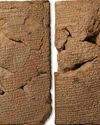
BAD MOON RISING
The British Museum houses around 130,000 clay tablets from ancient Mesopotamia written in cuneiform script between 3200 B.C. and the first century A.D.
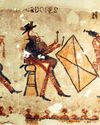
DANCING DAYS OF THE MAYA
In the mountains of Guatemala, murals depict elaborate performances combining Catholic and Indigenous traditions
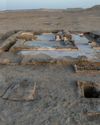
LOST GREEK TRAGEDIES REVIVED
How a scholar discovered passages from a great Athenian playwright on a discarded papyrus

Medieval England's Coveted Cargo
Archaeologists dive on a ship laden with marble bound for the kingdom's grandest cathedrals
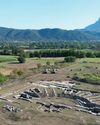
Unearthing a Forgotten Roman Town
A stretch of Italian farmland concealed one of the small cities that powered the empire
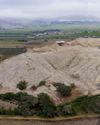
TOP 10 DISCOVERIES OF 2024
ARCHAEOLOGY magazine reveals the year's most exciting finds